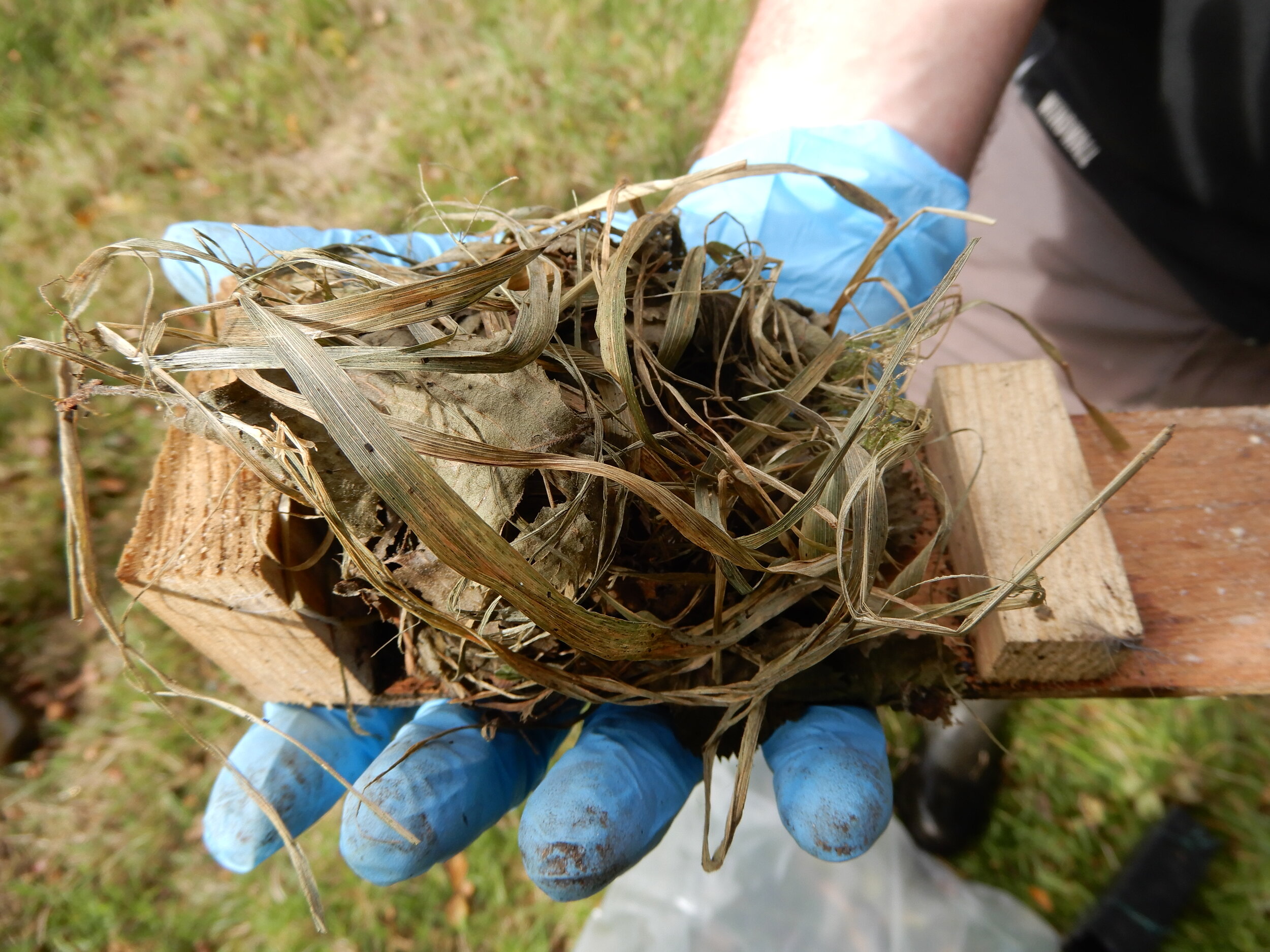Each year I write a piece for the Wiltshire Mammal Group (part of the UK Mammal Society) newsletter. This is my 2020 contribution.
The mammal highlight of 2020 was finding Dormice at UWNR again – but this time with an interesting & exciting twist.
Historically, nests and live animals had been confirmed in mixed scrub on the most western edge of UWNR. This part of the land leads into a broad & deep stream valley, that is almost impenetrable with hazel, bramble, holly, blackthorn and hawthorn. No surprise then that Dormice have been consistently confirmed in this area. Ecologists Lisa and Gareth retrieved the lively male in the picture, from a tube in this location, in May 2020. This is the 3rd year in a row that we have either found nests, or have seen live Dormice, in this very defined location.
Lisa and Gareth came back to UWNR in October and we carried out another careful sweep of the land inspecting the tubes and boxes. This time we found a nest (see pic below), right on the eastern edge of the land. Huge excitement….as the habitat develops, maybe they are spreading deeper into the land. Of course, it could be that they were already in this location – undetected.
Each winter I conservation lay sections of hedge and the results are astonishing. (I only ever lay 20 meters at a time. Bats use hedges and trees as waypoints when navigating, laying too much hedge risks detrimentally altering their night flight-scape). Within a year or two of conservation laying the hedges grow to become, tall, broad & impenetrably dense. I notice that they produce much more blossom in summer and fruit in late summer, early autumn. The hedge in the picture this year contains hazel nuts, blackberries, sloes & rose hips. This habitat is likely to be attractive to a range of species, including Dormice.
I additionally let the ground-level margins grow, so vegetation feathers out from the base of the hedge into the adjoining ride or path. These margins are burgeoning with dense grasses and thistles.
Lastly – last year I wrote about the effectiveness of the barn owl barn over the autumn & winter months. This season it is again in use, on nights when the barn owls are unable to hunt outdoors. I was at UWNR recently on a foul night of high winds and heavy rain - I watched the barn owls leave their box and fly directly into their barn, via the small back door. I assume they stayed there for the night, hunting in dry conditions.



